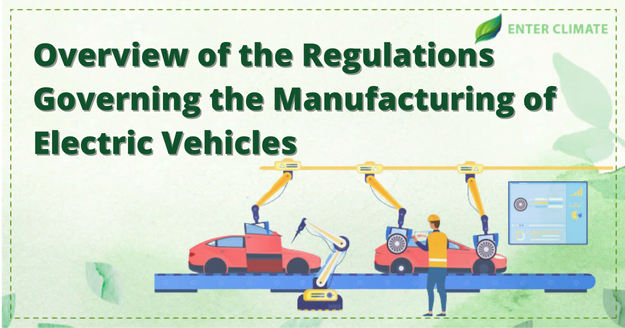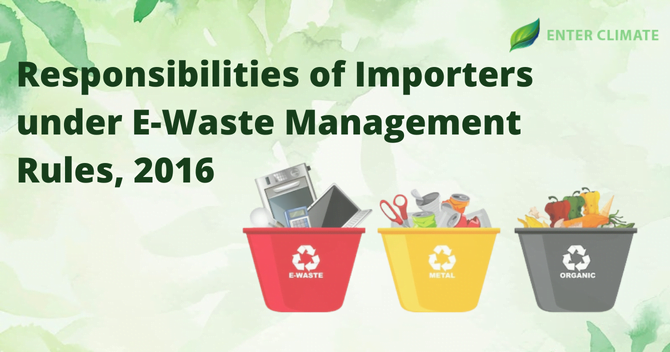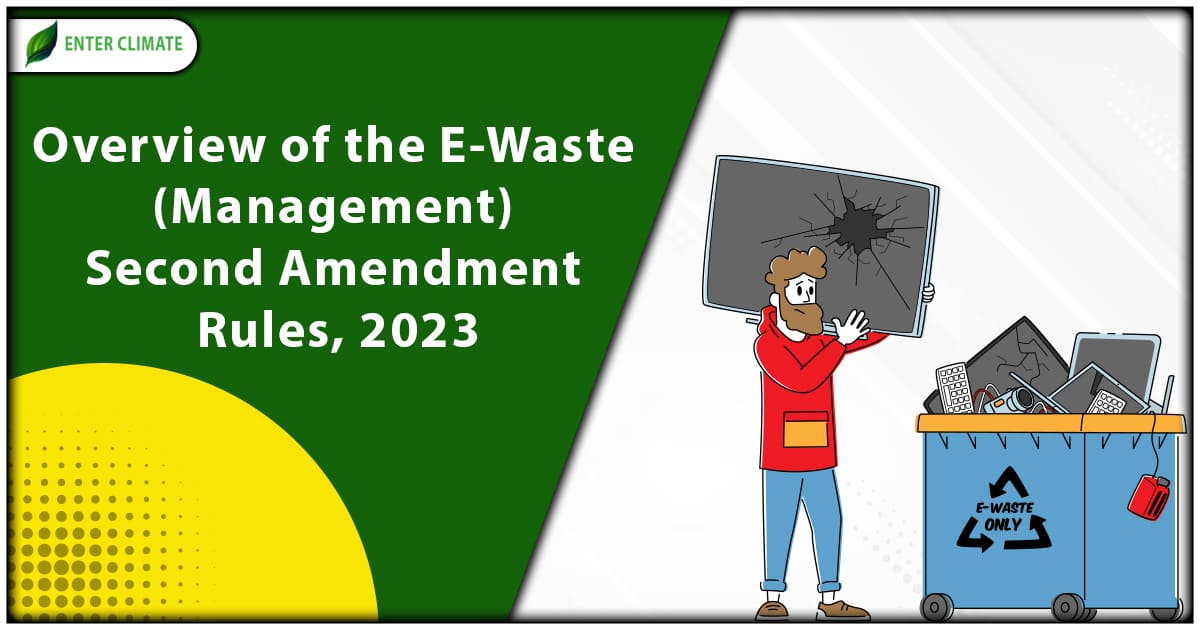Overview of the regulations governing the manufacturing of Electric Vehicles
 05 Sep, 2022
05 Sep, 2022 
Although the regulation for automobile manufacturing industries has existed for some time, the rules governing the manufacturing and sale of electric vehicles (EVs) have been brought from time to time within the last decade. There are a variety of schemes and incentives for manufacturers and consumers to promote the manufacturing of electric vehicles in the country. The Central and state governments have adopted measures to make EVs popular among consumers. New manufacturing facilities have come up in recent times that are trying to fulfil this huge demand. Still, a need for EV manufacturers, spare parts, EV batteries, charging stations, repair shops, etc., exists in the country because the existing capacity for them is insufficient. Laws and Regulations in this segment are not only limited to the manufacturing process, but specific waste management rules also apply to these businesses. Therefore provisions of the Environment (Protection) Act. 1986, Hazardous Waste Management Rules, E-Waste Management Rules, 2016 Battery Waste Management Rules, 2022 also are needed to be adhered to.
Government Incentives and Schemes for EV Manufacturers
The schemes introduced by the government for the manufacturing of Electric Vehicles focus on four key areas, i.e. Technology Development, Demand Creation, Pilot Projects and Charging Infrastructure. Major incentives by Central Government include
Production linked Incentive (PLI): This scheme was part of its Make in India initiative. Electric Vehicles are covered under the scheme for Automobile and Auto Components. Twenty-two specific products are covered under the PLI Scheme, including EV parts (charging ports, e-drivetrain, electric vacuum pump and e-compressor), flex-fuel kits, hydrogen fuel cells and hybrid energy storage systems.
FAME India: As a part of the National Electric Mobility Mission Plan 2020 (NEMMP 2020), the Department of Heavy Industries formulated Faster Adoption and Manufacturing of Hybrid & Electric vehicles in India. Through this, support for the development of the hybrid /electric vehicle market and its manufacturing ecosystem was to be developed to achieve self-sustenance in the country. The scheme aimed at incentivising all vehicle segments by encouraging the adoption of EVs by offering incentives for the purchase of Electric vehicles. Phase I of this scheme started in 2015 and was completed on 31st March 2019. Phase II started in April 2019 and went on until till31st March 2022.
Other initiatives to promote the manufacturing of Electric Vehicles
- GST on EVs was reduced to 5% from 12%, and GST on chargers/ charging stations has been reduced to 5% from 18%.
- The Ministry of Road Transport & Highways had announced that battery-operated vehicles would be exempted from permit requirements.
- SMoRTH issued a notification advising states to waive road tax on EVs, which will help reduce the initial cost of EVs and thereby help in the boosting the manufacturing of Electric Vehicles in the country.
- Several state government have also announced their respective EV policies. Some of these policies support the supply side to keep the cost of manufacturing of electric vehicles low, while some support the demand side by providing incentives for the purchase.
Regulating Criteria of EV manufacturing
The safety standards required for conventional vehicles working on ICE also apply to the manufacturing of electric vehicles. Although the regulatory standard covers a wide range of specific details about information management, privacy, installation, occupant injury prevention, and insulation against electric shock, a few have been elaborated.
Minimum safety requirements: During the manufacturing of electric vehicles, testing the vehicle for Electric Shock, Water Effects, Rechargeable Energy Storage System, and Crash test after crash condition. etc., have to be ensured.
Quality during the product’s life cycle – Factors such as range or mileage provided in one charge, Energy Consumption, Power Figures, Speed, and braking are also crucial. These parameters also become essential when obtaining incentives from the government. For instance, to be eligible for subsidy under FAME II, the EV must have at least 80 km range and must be able to achieve a top speed of at least 40 kmph.
Battery Performance and Safety Testing: Battery is the most crucial part of EVs. The government is encouraging new and existing manufacturers to produce electric vehicle battery packs with the industry-leading standard by providing various incentives for manufacturers. Apart from the standard licences, there are some caveats in setting up these businesses. For instance, the recently notified battery waste Management Rules, 2022 and the E-waste Management rules, 2016 apply to such businesses to keep a check on the waste generated by such industry, and the upcoming guidelines for EV Battery manufacturing standards may complicate the way forward for new companies in this sector. Proper guidance and timely assistance can help such businesses in the initiation process.
Authorisations and Licences required for setting up of EVs/ battery manufacturing unit
Consent NOC from Pollution Control Board: Consent to establish (CTE), as well as Consent to operate (CTO), will be needed for the manufacturing of Electric Vehicles under the provisions of the Water (P&CP) Act, 1974[1] and Air (P&CP) Act, 1981
Factory Licence: every factory owner must register their premises with the local authorities before commencing business. This license acts as a document of approval from authorities to carry out manufacturing activities.
CMVR Certification: The authorities BIS and AIS publish standards for Central Motor Vehicle Rules (CMVR). The regulation for these certifications stipulates that motor vehicles and their systems and components must be approved according to the CMVR regulations before entering the Indian market. The tests needed under this regulation are safety emissions and the type approval process, including the Factory’s audit, Type testing and conformity of the product (CoP).
AIS Certificate: Some regulations need to be adhered to during the manufacturing of Electric Vehicles, such as AIS038, 039, 040, 041, 048, and 049. Hybrid Electric vehicles have to comply with AIS102 Part1 and Part2.
Fire NOC: It is mandatory to possess a fire license (Fire NOC) from the state fire department to obtain a building plan approval to verify that a building is resistant or unlikely to have any fire-related accidents by following specific guidelines laid down by the fire department. An applicant can obtain NOC for a residential/ commercial building by the respective state fire department.
Documents Needed for Obtaining Consent NOC certificate
- Duly filled Application Form of concerned SPCB
- Signed Undertaking
- Site Plan with the roadmap
- Detailed Project Report and total investment.
- Details of sources of air emission, effluent discharge or hazardous waste etc.
- Details of the manufacturing process
- Land documents such as rent /lease agreement
- Industry Registration Documents.
- Consent fee (as applicable)
- Balanced Sheet Certified by a CA
- Laboratory analysis report of the trade effluent and emissions.
- Copy of any environmental clearance or other permission required from the State Government.
- Any other Document specified in the application form
Market Overview of Electric Vehicles in India
Start-ups in the Electric Vehicle segment, especially in the two-wheeler segment, have raised more than USD 600 million in investment. Government of India, there were about 380 EV manufacturers in India till 31st July 2021. Further, the sale of EVs in the country is expected to grow annually at a compound annual growth rate (CAGR) of 35% till 2026. With the increase in investment in this sector as stated above, the leading players are rapidly growing their market presence.
The penetration of electric two-wheelers is expected to rise from 2% in FY21 to 10-15% by FY26 and 37-42% by FY31, with sales reaching three to four million units and 14-15 million units, respectively. Electric scooters are expected to comprise most of the sales because of multiple models and lower TCO availability.
Scope in Electric Vehicle Manufacturing Business
The scope of this industry is immense. Even if an entrepreneur does not have the required capital or technical expertise, or experience to enter into the manufacturing of Electric Vehicles, there are many associated businesses they may explore.
- Businesses manufacturing Lithium-ion battery manufacturing and import of lithium-ion battery packs will also be needed, and authorisations, businesses can capture significant market share after obtaining licences and authorisations.
- Authorised vehicle scrapping facilities (AVSF) and Registered Vehicle Scrapping facilities (RVSF) are contacted by original Equipment manufacturers to provide them with usable spares. RVSF, after obtaining the requisite authorisations, cannot only gain scraping business from these manufacturers but also assist them with their e-waste management under Extended Producer Responsibility.
- The FAME had proposed the establishment of charging infrastructure, whereby about 2700 charging stations will be established in metros, other million-plus cities, intelligent cities and cities of Hilly states across the country so that there is at least one charging station available in a grid of 3 x 3 km. Charging stations have also been proposed on major highways connecting major city clusters. These proposals by the government will give business to associated industries that manufacture spare parts for EVs, battery packs, and charging infrastructures throughout the country.
Conclusion
To give a boost to the manufacturing of Electric Vehicle, tax incentives are being provided and to make them compete with internal combustion engines, associated benefits are being given like providing public EV charging infrastructure development, upfront discounts on the purchase of EVs, favourable policies on the import of spare parts and machinery etc. Such incentives have created a huge demand for EVs in the country and led to awareness among consumers by helping develop a new generation of buyers that want to do their bit towards the environment.













